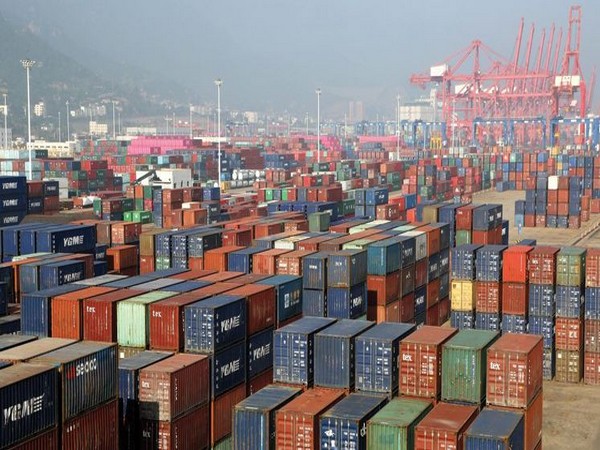New Delhi: In a significant revelation, the PHD Chamber of Commerce and Industry’s research report has positioned India’s exports as the most resilient among the top 20 global exporters. The report underscores the impressive growth of exports, with rates reaching 20 per cent and 9.7 per cent in 2021 and 2022, respectively, marking the highest growth among leading exporting nations.
Sanjeev Agrawal, President of the Chamber of Commerce and Industry, credited the dynamic policy environment provided by the government and exporters’ concerted efforts to integrate with global value chains for this remarkable feat.
He expressed optimism about the trajectory of export growth, even as October 2023 witnessed a notable 9 per cent uptick after a brief slowdown.
Over the past decade, India’s exports have soared, escalating from USD 375 billion in FY 2011 to USD 770 billion in FY 2023. The launch of India’s new Foreign Trade Policy (FTP) 2023, characterized by its five key elements – Duration, Dynamism, Decentralization, Direction, and Disaster-proofing, aims to create an enabling ecosystem for exporters.
Dr Ranjeet Mehta, Executive Director of the PHD Chamber of Commerce and Industry, highlighted the FTP 2023’s objective to enhance India’s competitiveness globally, aligning with the vision of becoming “Atmanirbhar” (self-reliant).
Mehta said, “The launch of India’s new Foreign Trade Policy (FTP) 2023 with its five key elements of Duration, Dynamism, Decentralisation, Direction and Disaster proofing, is aimed at creating an enabling ecosystem for exporters. It shall bolster India’s export quantum while considering the size of the Indian economy and its manufacturing and service sector base.
Mehta added, “The FTP 2023 aims to increase India’s competitiveness in the global markets by promoting and developing each state to be able to integrate with the global trade which is a move in line with India’s vision of becoming “Atmanirbhar” (self-reliant).”
“The emerging high growth destinations such as Togo, Netherlands, Brazil, Israel, Indonesia, Turkey, Australia, South Africa, Saudi Arabia and Belgium and high growth export commodities such as Sugar and confectionary, Mineral fuel and oils, aluminium and articles, inorganic chemicals, ships, boats and floating structure, rubber and articles and optical, photographic, medical apparatus would enhance India’s export growth to new highs”, Mehta said.
The FTP 2023 focuses on promoting and developing each state to integrate with global trade, fostering a move towards sustainable low-carbon economic development.
The report identifies emerging high-growth destinations such as Togo, Netherlands, Brazil, Israel, Indonesia, Turkey, Australia, South Africa, Saudi Arabia, and Belgium.
Additionally, high-growth export commodities, including Sugar and confectionery, Mineral fuel and oils, Electrical machinery and parts, Aluminum and articles, and more, are expected to contribute significantly to India’s export growth.
Sanjeev Agrawal emphasized the consistent growth of the top 10 export destinations and commodities over the last five years. Togo leads the list with a remarkable 73 per cent growth, followed by the Netherlands, Brazil, Israel, and others.
Aggarwal said, “Exports to these countries have grown at a high growth rate amidst the global economic slowdown. These countries are emerging major growth destinations for India’s exports though the volumes have to pick up more significantly in the coming times. The high growth-high volume export commodities have significant potential to enhance India’s export growth to new highs.”
These destinations and commodities, although showing high growth rates, present opportunities for increased volumes in the future.
The report also identifies 75 products accounting for approximately 50 per cent of India’s total exports in FY 2023.
Dr SP Sharma, Chief Economist of the Chamber of Commerce and Industry, emphasized that these products, despite having great potential, currently make up only 6 per cent of global exports.
“The industry body had identified 75 products on the basis of a six-digit Harmonised system (HS code), these 75 commodities account for about 50 per cent of India’s total exports for the FY 2023, suggesting that these commodities have a great potential to propel India’s exports. Nonetheless, India can scale up exports of these commodities exploring the massive untapped potential in the global markets, since they make up only 6 per cent of global exports. These 75 products exports are USD 222 billion in the world exports of USD 3838 billion”, said Dr Sharma
He sees substantial room for India to scale up exports of these commodities, tapping into the untapped potential in global markets.
Services exports have shown commendable resilience and price competitiveness, growing at an average rate of 24 per cent over the last two years.
Dr Sharma highlighted the significance of services exports as a major growth driver towards achieving the ambitious target of USD 2 trillion in exports by 2030.
Looking ahead, Agrawal stressed the importance of ease of doing exports and government-initiated reforms for achieving the USD 2 trillion target.
Addressing the cost of doing business, including the capital, power, land availability, logistics, and labour, he emphasized the need for calibrated reforms.
Additionally, exploring new Free Trade Agreements (FTAs) with the EU and the UK was identified as a significant avenue to boost India’s participation in global value chains. (ANI)
(With inputs from ANI)












